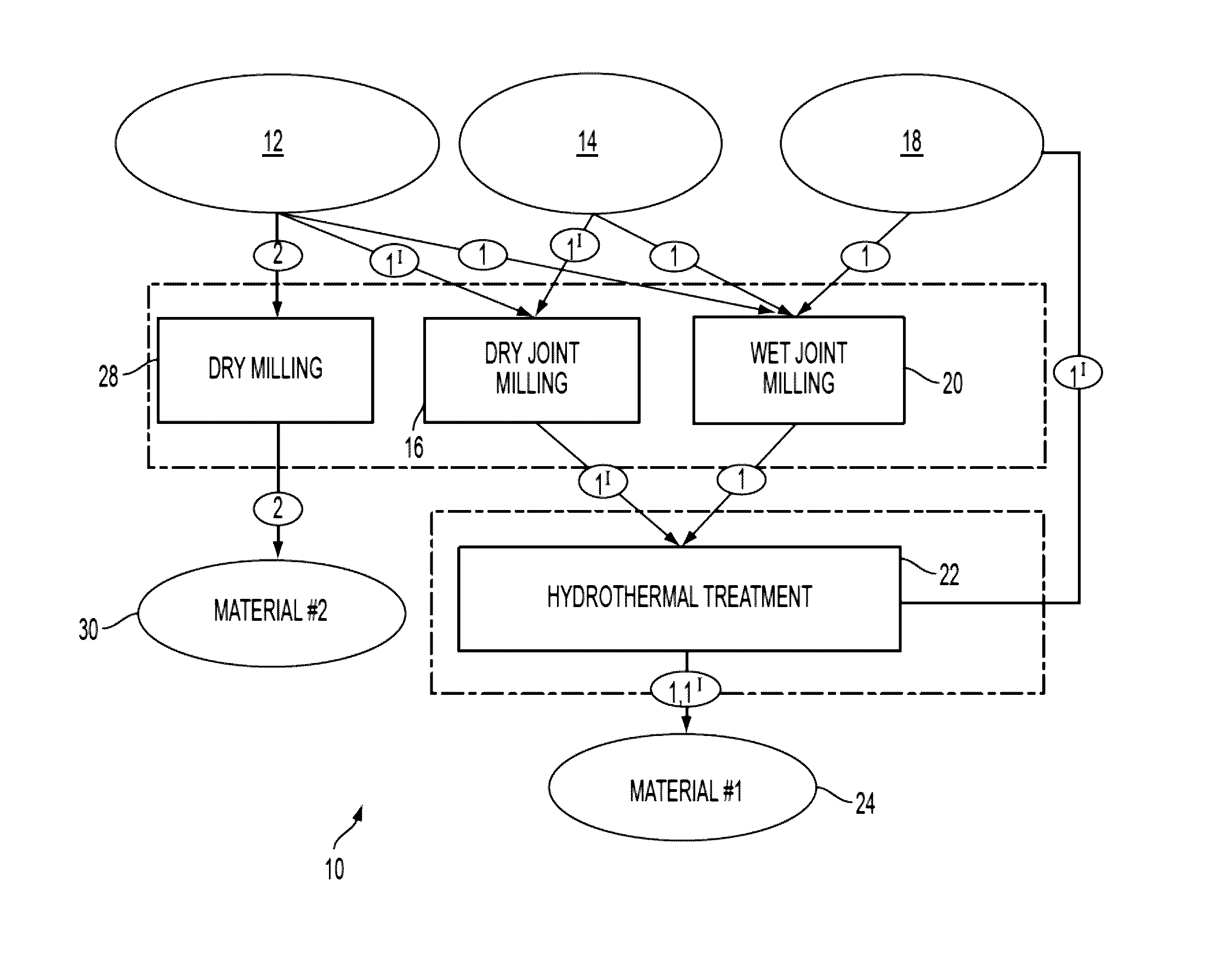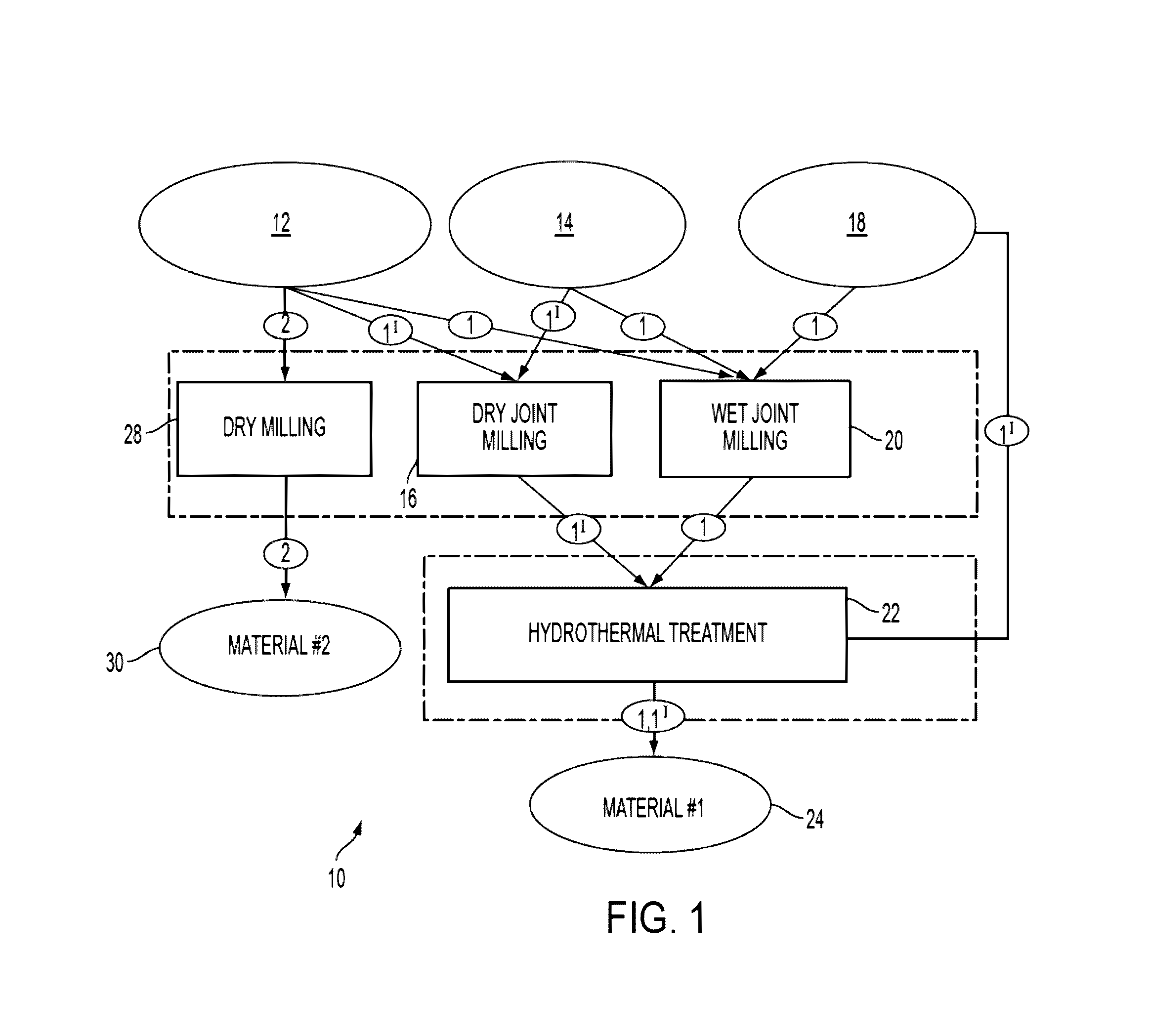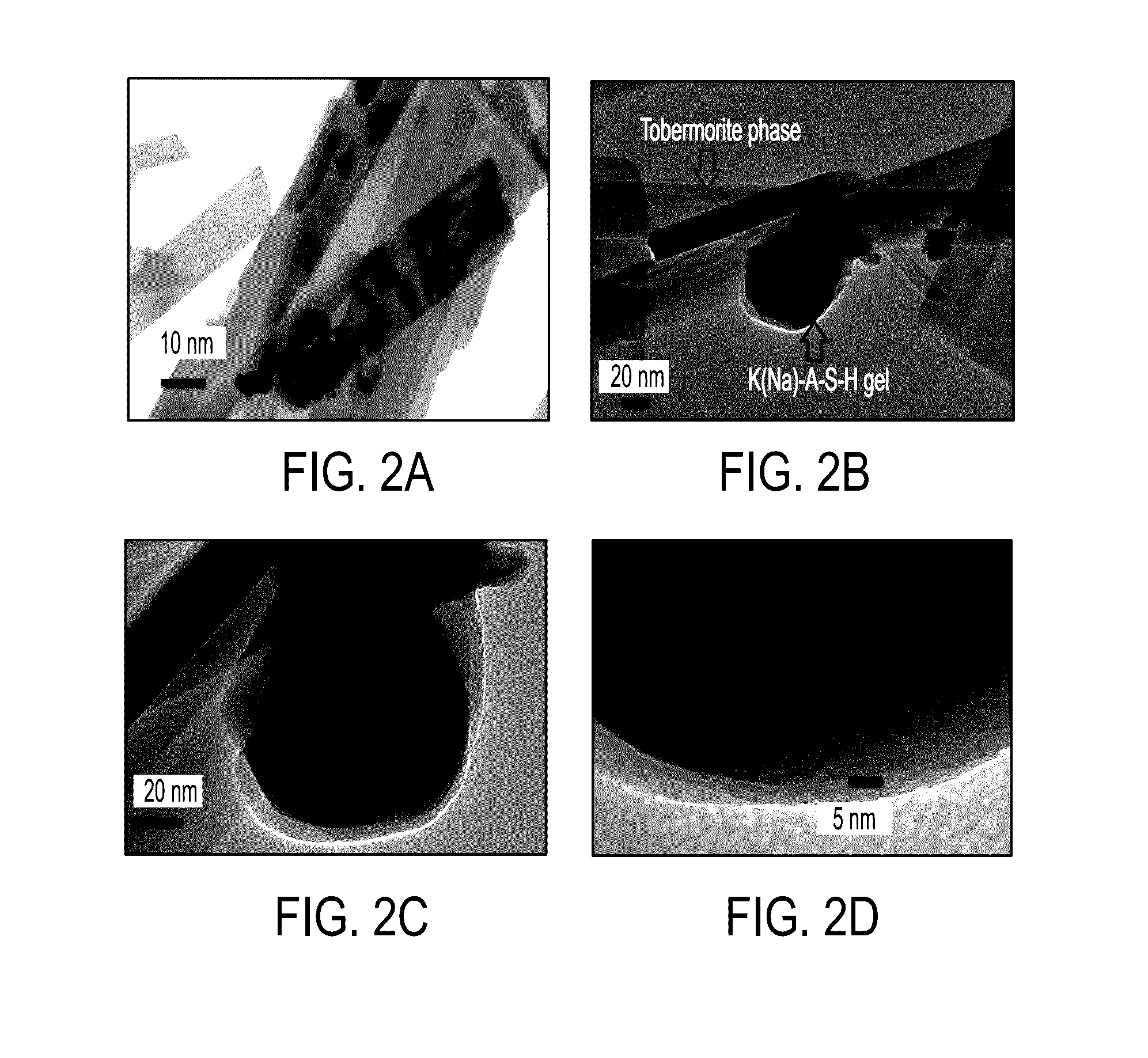Alkali metal ion source with moderate rate of ion release and methods of forming
a technology of metal ion source and ion release, which is applied in the direction of silicon compounds, silicates, calcareous fertilisers, etc., can solve the problems of waste of potassium and other nutrition elements introduced into the soil in the form of highly soluble salts, unoptimized soils for growing crops, and insufficient nitrogen in soils, etc., to achieve the effect of safe raising
- Summary
- Abstract
- Description
- Claims
- Application Information
AI Technical Summary
Benefits of technology
Problems solved by technology
Method used
Image
Examples
examples
[0036]10 g of roughly ground raw material (ground syenite ore with rough irregular crystalline particles with the size 2 (Sigma-Aldrich, grade: ≧96.0%≦3.0% calcium carbonate) for 5-10 minutes before addition of water. Distilled water was added to the mixture according to the proportion listed in Table I. The suspension was placed into the chamber of a McCrone Micronising Mill by McCrone Microscope & Accessories of Westmount, Ill., and milled for 30 minutes (weight ratio between the milling elements (agate spheres) and the sample was about 4). After milling, the suspension was transferred to a batch pressure vessel commercially available from Parr Instrument Co., of Moline, Ill. and maintained at a temperature of about 200° C. and pressure of about 225 PSIG for about 24 hours without stirring. After the reaction, a resulting solid phase containing residual liquid was dried overnight at about 110° C. The ultimate compositions of the material are listed as Examples 1, 2 and, 3 in Table...
PUM
| Property | Measurement | Unit |
|---|---|---|
| diameter | aaaaa | aaaaa |
| specific surface area | aaaaa | aaaaa |
| specific surface area | aaaaa | aaaaa |
Abstract
Description
Claims
Application Information
 Login to View More
Login to View More - R&D
- Intellectual Property
- Life Sciences
- Materials
- Tech Scout
- Unparalleled Data Quality
- Higher Quality Content
- 60% Fewer Hallucinations
Browse by: Latest US Patents, China's latest patents, Technical Efficacy Thesaurus, Application Domain, Technology Topic, Popular Technical Reports.
© 2025 PatSnap. All rights reserved.Legal|Privacy policy|Modern Slavery Act Transparency Statement|Sitemap|About US| Contact US: help@patsnap.com



